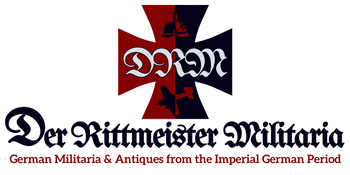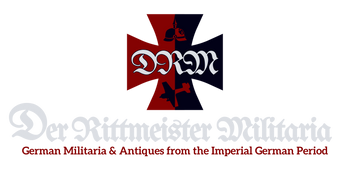German Colonies: The Overseas Empire (1884–1918)
CLICK HERE FOR ALL PRODUCTS RELATED TO THE GERMAN COLONIES
Overview
- Germany's colonial empire was primarily established during the Scramble for Africa in the late 19th century under Kaiser Wilhelm II and Chancellor Otto von Bismarck.
- Territories were concentrated in Africa, the Pacific, and China, with Germany becoming the third-largest colonial power by 1914.
- Most colonies were lost to Allied powers during World War I due to limited military resources and their isolation from mainland Germany.
Key Colonies and Their Histories
-
German East Africa (Deutsch-Ostafrika)
- Modern Countries: Tanzania, Rwanda, Burundi, and parts of Mozambique.
- Capital: Dar es Salaam.
- Economic Role: A major exporter of coffee, cotton, and rubber.
-
World War I:
- Paul von Lettow-Vorbeck led a guerrilla campaign against British forces, tying down large numbers of Allied troops in Africa.
- Known for his strategic brilliance, Lettow-Vorbeck remained undefeated in the field.
- Fate: Ceded to Britain and Belgium after the Treaty of Versailles.
-
German South West Africa (Deutsch-Südwestafrika)
- Modern Country: Namibia.
- Capital: Windhoek.
- Economic Role: Diamond mining and ranching.
-
Notable Event:
- Herero and Namaqua Genocide (1904–1908): A brutal suppression of indigenous uprisings, considered one of the first genocides of the 20th century.
- World War I: Occupied by South African forces under British command.
- Fate: Became a League of Nations mandate under South Africa.
-
Kamerun (German Cameroon)
- Modern Countries: Cameroon and parts of Nigeria, Chad, Gabon, and Congo.
- Capital: Yaoundé.
-
World War I:
- British and French forces invaded and occupied Kamerun after prolonged fighting in the jungle.
- Fate: Partitioned between Britain and France after the war.
-
Togoland
- Modern Countries: Togo and parts of Ghana.
- Capital: Lomé.
-
World War I:
- Quickly occupied by British and French forces in 1914.
- Fate: Divided between Britain and France.
-
German New Guinea (Deutsch-Neuguinea)
- Modern Countries: Papua New Guinea and surrounding islands.
- Capital: Rabaul.
-
World War I:
- Captured by Australian forces in 1914 during the Australian Naval and Military Expeditionary Force campaign.
- Fate: Became a League of Nations mandate under Australian administration.
-
German Samoa (Deutsch-Samoa)
- Modern Country: Samoa.
-
World War I:
- Occupied by New Zealand forces without resistance in 1914.
- Fate: Became a League of Nations mandate under New Zealand.
-
German Pacific Islands (Mariana, Caroline, and Marshall Islands)
-
World War I:
- Captured by Japanese forces early in the war.
- Fate: Became League of Nations mandates under Japan.
-
World War I:
-
Kiautschou Bay (Jiaozhou Bay, China)
- Modern Location: Qingdao, Shandong Province, China.
- Economic Role: A strategic naval base and trade port.
-
World War I:
- Japan and Britain besieged and captured the colony in 1914 during the Siege of Tsingtao.
- Fate: Transferred to Japanese control after the war.
Role of the Colonies in World War I
- German colonies were seen as strategic outposts, but their isolation and lack of reinforcements made them vulnerable.
- Most colonies fell to Allied forces early in the war, often with minimal German resistance except for German East Africa, where Lettow-Vorbeck conducted a prolonged campaign.
- The colonies' loss was formalized in the Treaty of Versailles, which mandated their redistribution to Allied powers.
Collectibles from German Colonies
-
Military Memorabilia:
- Medals and badges issued to German colonial troops (Schutztruppe), including the Askari uniforms and insignia from East Africa.
- Items from campaigns, such as captured flags, rifles, and trench art.
-
Maps and Documents:
- Colonial maps showing German territories in Africa, the Pacific, and China.
- Administrative documents like trade permits and official decrees.
-
Propaganda and Ephemera:
- Postcards depicting life in the colonies, including images of native populations and German settlers.
- Propaganda posters promoting colonial expansion or investment.
-
Cultural Artifacts:
- Items reflecting the blend of German and local cultures, such as textiles, coins, and stamps.
- Photographs of German settlements, mission schools, and military outposts.
-
Commemorative Items:
- Medallions and plaques celebrating German colonial achievements.
- Publications detailing military campaigns, particularly those in East Africa.
Connections to Display and Storytelling
- Military History: Highlight campaigns like the Siege of Tsingtao or Lettow-Vorbeck’s guerrilla warfare, pairing artifacts with maps and personal accounts.
- Colonial Administration: Showcase administrative documents and artifacts reflecting Germany’s governance in Africa or the Pacific.
- Cultural Interactions: Display items that illustrate the interactions between German settlers and indigenous populations.







